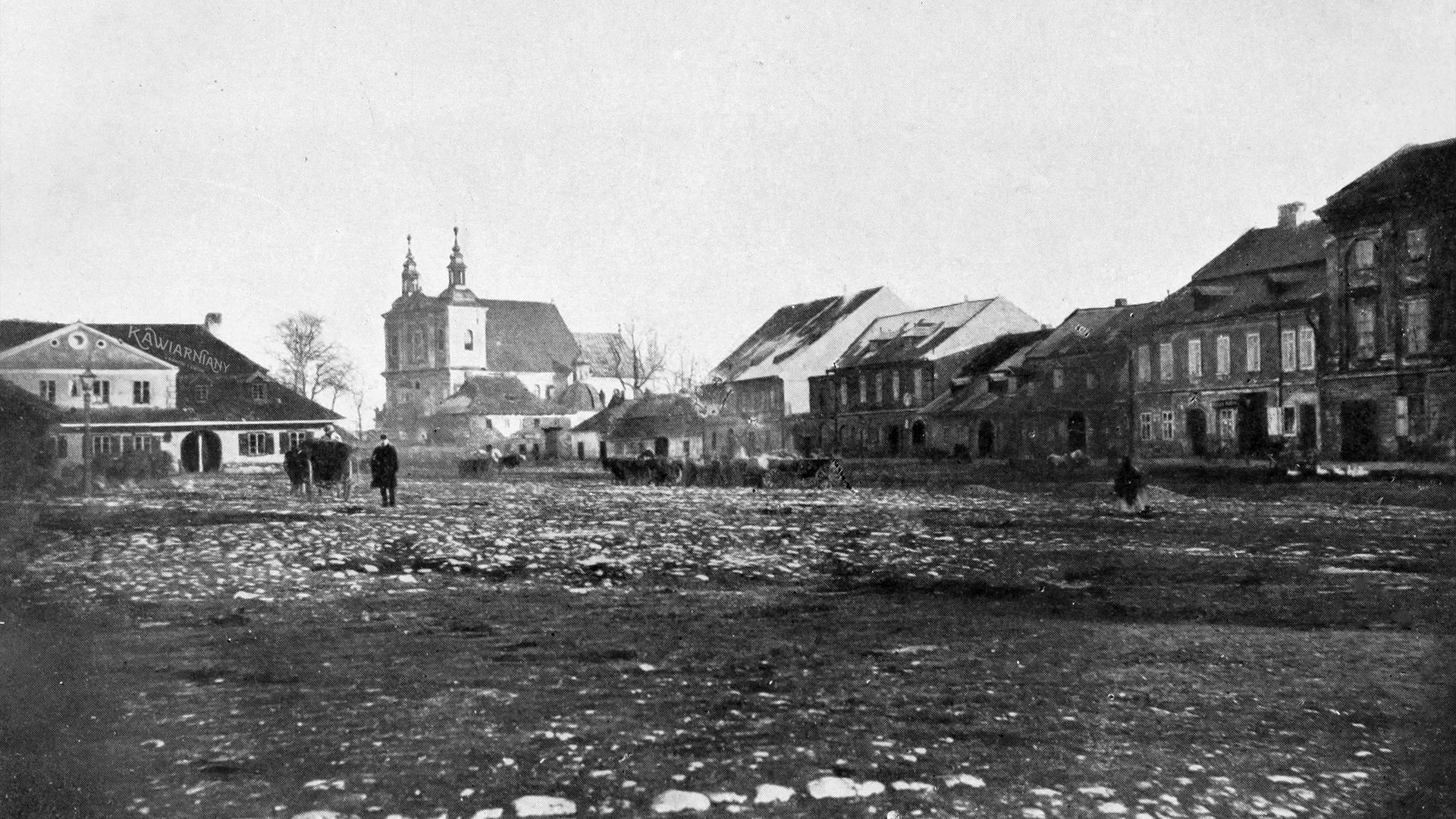 Na północ od dworca
Na północ od dworca
Z ruchliwego skrzyżowania w pobliżu Dworca Głównego PKP utworzonego przez ulicę: Lubicz, Pawią i Westerplatte odchodzi w kierunku zachodnim ulica Basztowa, która lekkim lukiem obiega północną część Plant i po jakimś czasie przechodzi w ul. Dunajewskiego (dawniej 1 Maja). Basztowa jest częścią bulwarów okrążających Stare Miasto na granicy Plant. Po paru minutach marszu Basztową od skrzyżowania można dojść do placu Jana Matejki, a tym samym do granic historycznego Kleparza.
Kleparz
Samodzielne niegdyś miasto Kleparz (Clepardia, jak dawniej pisano), słynące przed paroma wiekami z oberży, dość częstych pożarów i szkodliwych ilości śmieci, należy obecnie do dzielnicy Krowodrza. Obok Kazimierza było zawsze najważniejszą osadą Krakowa. Osada Kleparz powstała w XII w. pomiędzy dwoma ważnymi traktami: Drogą Królewską i traktem biegnącym na Olkusz i dalej na Śląsk. Król Kazimierz Wielki w 1366 r. wraz z nową nazwą Florencja (od św. Floriana), która jednak nie przyjęła się na długo, nadał Kleparzowi prawa miejskie. Był tu więc urząd miejski, ratusz (po obydwu nie ma śladu) i plac targowy. Od początku istnienia po schyłek XIX w. Kleparz był ubogim, handlowo-rzemieślniczym organizmem, zabudowanym drewnianymi parterowymi domkami, z jarmarczną atmosferą. Nawet przyłączenie go do Krakowa w 1791 r. niewiele zmieniło. Urbanizacyjny milowy krok wykonał Kleparz na przełomie XIX i XX w., kiedy wybudowano monumentalne gmachy Akademi Sztuk Pięknych i obecnej dyrekcji PKP. Dawniej w centrum Kleparza rozpościerał się bardzo duży plac Kleparski służący jako targowisko, który z czasem podzielono na plac Matejki oraz na plac targowy Stary Kleparz – i zabudowano.
Od 1333 r., czyli od śmierci Władysława Łokietka, Kraków był świadkiem wielkich pogrzebów królewskich, które odbywały się przed lub po koronacji kolejnego monarchy. Orszaki pogrzebowe królów zmarłych poza Wawelem ruszały z Kleparza, z kościoła św. Floriana, w którym odprawiano pierwsze nabożeństwo, i podążały dalej Drogą Królewską na Wawel, gdzie w katedrze składano królów do grobów.
Gdzieś w XII w., jeszcze przed rokiem 1185, papież Lucjusz III postanowił przychylić się do gorących próśb polskiego księcia, Kazimierza Sprawiedliwego i przesłać mu dało męczennika Floriana. W tym czasie w Krakowie nie było jeszcze ani jednej relikwii. Naprzeciw orszakowi wiozącemu relikwie wyszli pobożni krakowianie, a wśród nich książę Kazimierz i biskup krakowski Gedeon – podobno aż na 7 mil. Nagle na północnych przedmieściach Krakowa woły ciągnące wóz z czcigodnymi szczątkami św. Floriana stanęły w miejscu, zaparły się, i dalej, mimo gróźb i próśb, iść nie chciały. Inna wersja tej opowieści dopowiada, że ciało świętego zrobiło się bardzo ciężkie i woły nie mogły ruszyć. Tak czy owak, dopiero gdy książę i biskup uroczyście przysięgli, że w miejscu, gdzie stanęły uparte bydlęta, wzniosą kościół poświęcony Florianowi, woły poszły dalej. I tak właśnie powstał kościół św. Floriana na Kleparzu.
Historia z wołami wiozącymi szczątki św. Floriana to tyko ułamek wydarzeń nadprzyrodzonych, których życzliwą i chłonną sceną był Średniowieczny Kraków. Co rusz któremuś z panujących ukazywał się anioł lub jakiś zmarły i nakazywał robić to czy tamto: Leszkowi Czarnemu ukazał się jakoby wysłannik niebios, nakazując mu wyprawę przeciw Jadźwingom. Skalane rekami złoczyńców lub niewiernych przedmioty żyją własnym niepojętym życiem – przykłady: dzwon utopiony przez Tatarów w Wiśle na Salwatorze wyłaniał się raz do roku z głębin i dzwonił na trwogę, monstrancja rzucona do błota świeciła nieziemsko, małe dzieci przepowiadały przyszłość, a komety i zjawiska atmosferyczne miały głębokie znaczenie.